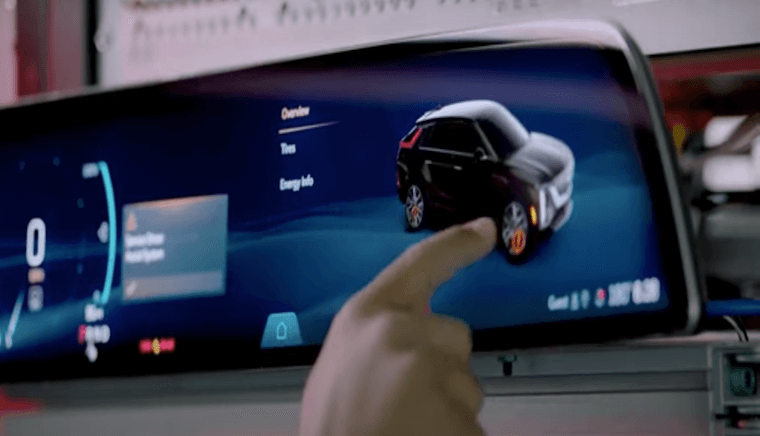The News: Red Hat and NVIDIA are collaborating to build Radio Access Network (RAN) offerings that will create and expand new AI and 5G services across hybrid and multicloud environments using industry-standard servers. Under the deal, Red Hat’s OpenShift enterprise Kubernetes platform now supports the ability for NVIDIA converged accelerators and the NVIDIA Aerial SDK to be used with software-defined 5G virtual radio access networks (vRAN) and enterprise AI applications. Read the full Press Release on the expanded RAN partnership, announced February 27 at Mobile World Congress (MWC) in Barcelona, on the Red Hat web site.
Red Hat and NVIDIA Partner to Expand 5G Cloud RAN Networks
Analyst Take: Red Hat and NVIDIA are making a smart and strategic move by bringing together Red Hat’s OpenShift Kubernetes platform with NVIDIA converged accelerators and the NVIDIA Aerial SDK. What this creative pairing will do is open the floodgates for broader expansion of network deployments across hybrid and multicloud environments for users. And, according to Red Hat and NVIDIA, they expect this will inspire more improvements by creating new opportunities for multi-tenancy and RAN-as-a-service.
The big news here is that all this fuels even more evolution for new thinking and possibilities for AI and 5G in the cloud, both of which are quickly growing in use and popularity among consumers and business users.
This combination of the OpenShift and NVIDIA technologies along with cloud-native architecture brings together needed pieces that promote the creation of software-defined 5G virtual radio access networks (vRAN) and enterprise AI applications.
These things are more critical now because they will allow for more data processing to be done at the network edge, where speed and reliability are top demands, along with 100 percent uptime expectations from every smartphone user, IoT device, and enterprise operations leader.
Making these transactions and communications work better is huge for enterprises and users, and this is at the heart of making further breakthroughs and improvements in RAN, vRAN and other networks. I am impressed with this expanded Red Hat NVIDIA collaboration, and I believe that it will help set new standards for even greater network performance improvements to come.
Red Hat and NVIDIA – What’s Under the Hood Here?
The beauty of this latest Red Hat and NVIDIA partnership is that it uses composable infrastructure, a framework that increases resource utilization by disaggregating devices and processes. Instead of being arranged in a classic server-client architecture or via software-defined networking, composable infrastructure extracts and provisions – or composes – compute, storage, and networking resources as needed by software. This provides better utilization, faster deployments and more flexibility for applications, which is especially critical at the network edge.
It allows the handling and processing of large amounts of data much faster and more efficiently due to the use of NVIDIA GPUs, DPUs (Data Processing Units), and converged accelerators. The NVIDIA converged accelerators combine an NVIDIA Ampere GPU with an NVIDIA BlueField-2 DPU into a high-performance package that can remove compute loads from system CPUs using composable infrastructure. Again, this disaggregates compute, storage, and networking resources, which allows faster processing of data packets and improved security by isolating power-sapping tasks from traditional infrastructure.
In my view, these performance gains are important because they provide a critical mechanism for enterprises to successfully take on the much bigger data demands of complex applications, especially already challenging needs such as edge computing, autonomous vehicles, industrial and agricultural technology advances, private 5G, AI, and more.
Red Hat and NVIDIA Partnership Overview
This newest Red Hat and NVIDIA partnership shows the creative thinking and savvy engineering of these two technology powerhouses as they continue to work to solve these complex computing challenges.
Expanding and improving 5G RAN networks and technologies will help service providers better meet the performance and data demands of enterprises and consumers, while also maintaining critical security capabilities and enhanced network management.
It will be fascinating to watch the evolution of these advancements proceed over time as Red Hat and NVIDIA help to drive these technologies forward.
Disclosure: Futurum Research is a research and advisory firm that engages or has engaged in research, analysis, and advisory services with many technology companies, including those mentioned in this article. The author does not hold any equity positions with any company mentioned in this article.
Analysis and opinions expressed herein are specific to the analyst individually and data and other information that might have been provided for validation, not those of Futurum Research as a whole.
Other insights from Futurum Research:
Red Hat Launches Latest Versions of Enterprise Operating System
New NVIDIA TAO Toolkit Capabilities Ease AI Deployments
Implementing AI Applications for Your Digital Transformation – The Six Five Summit Sessions






